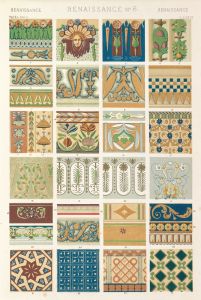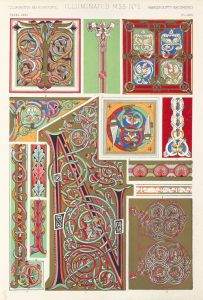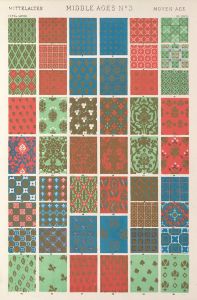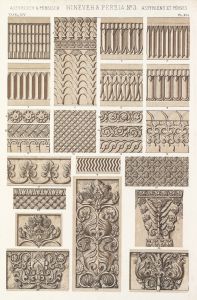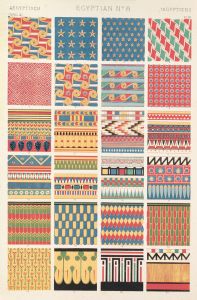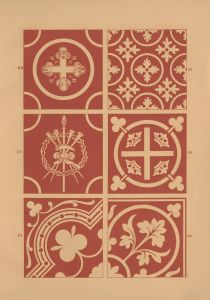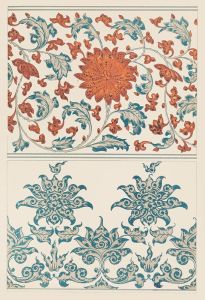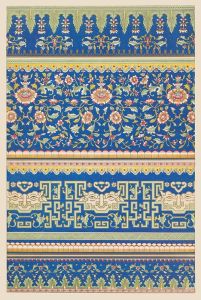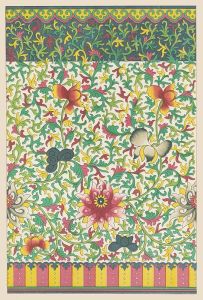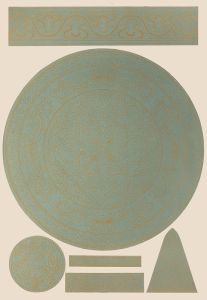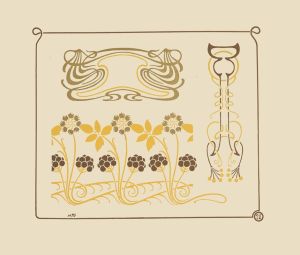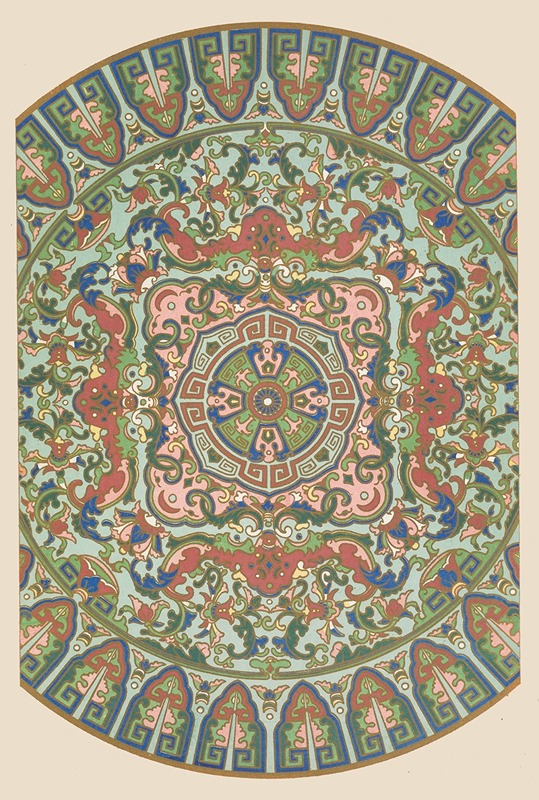
Examples of Chinese ornament, Pl.32
A hand-painted replica of Owen Jones’s masterpiece Examples of Chinese ornament, Pl.32, meticulously crafted by professional artists to capture the true essence of the original. Each piece is created with museum-quality canvas and rare mineral pigments, carefully painted by experienced artists with delicate brushstrokes and rich, layered colors to perfectly recreate the texture of the original artwork. Unlike machine-printed reproductions, this hand-painted version brings the painting to life, infused with the artist’s emotions and skill in every stroke. Whether for personal collection or home decoration, it instantly elevates the artistic atmosphere of any space.
"Examples of Chinese Ornament, Pl. 32" is a plate from the influential design book The Grammar of Ornament by Owen Jones, first published in 1856. Owen Jones (1809–1874) was a British architect and designer known for his contributions to the study of decorative arts and his efforts to systematize design principles. His work aimed to inspire and educate designers by providing a comprehensive visual catalog of ornamental styles from various cultures and historical periods.
The Grammar of Ornament is a seminal work in the history of design, featuring 100 color plates that showcase decorative patterns and motifs from around the world. Plate 32 specifically focuses on Chinese ornamentation, presenting a selection of designs that reflect the aesthetic principles and artistic traditions of Chinese decorative art. The patterns in this plate are characterized by their intricate geometry, vibrant colors, and symbolic motifs, which are hallmarks of traditional Chinese design.
Jones's depiction of Chinese ornamentation in Plate 32 draws from historical sources and artifacts, including ceramics, textiles, and architectural details. The designs emphasize symmetry, balance, and the use of recurring motifs such as floral patterns, scrollwork, and fretwork. These elements are often associated with Chinese artistic traditions and reflect the cultural emphasis on harmony and order.
The inclusion of Chinese ornamentation in The Grammar of Ornament highlights Jones's appreciation for the diversity of global design traditions. He believed that studying and understanding these traditions could inspire modern designers and promote a more universal approach to art and architecture. The book's chromolithographic plates, including Plate 32, were groundbreaking for their time, showcasing vivid colors and precise details that faithfully represented the original designs.
While The Grammar of Ornament has been praised for its artistic and educational value, it is also a product of its time and reflects the 19th-century European perspective on non-Western art. Jones's interpretations of Chinese ornamentation were based on the materials available to him and may not fully capture the cultural and historical context of the original designs.
Today, Plate 32 and the rest of The Grammar of Ornament remain valuable resources for scholars, designers, and art enthusiasts. They provide insight into 19th-century perceptions of global decorative arts and continue to inspire contemporary design practices.





